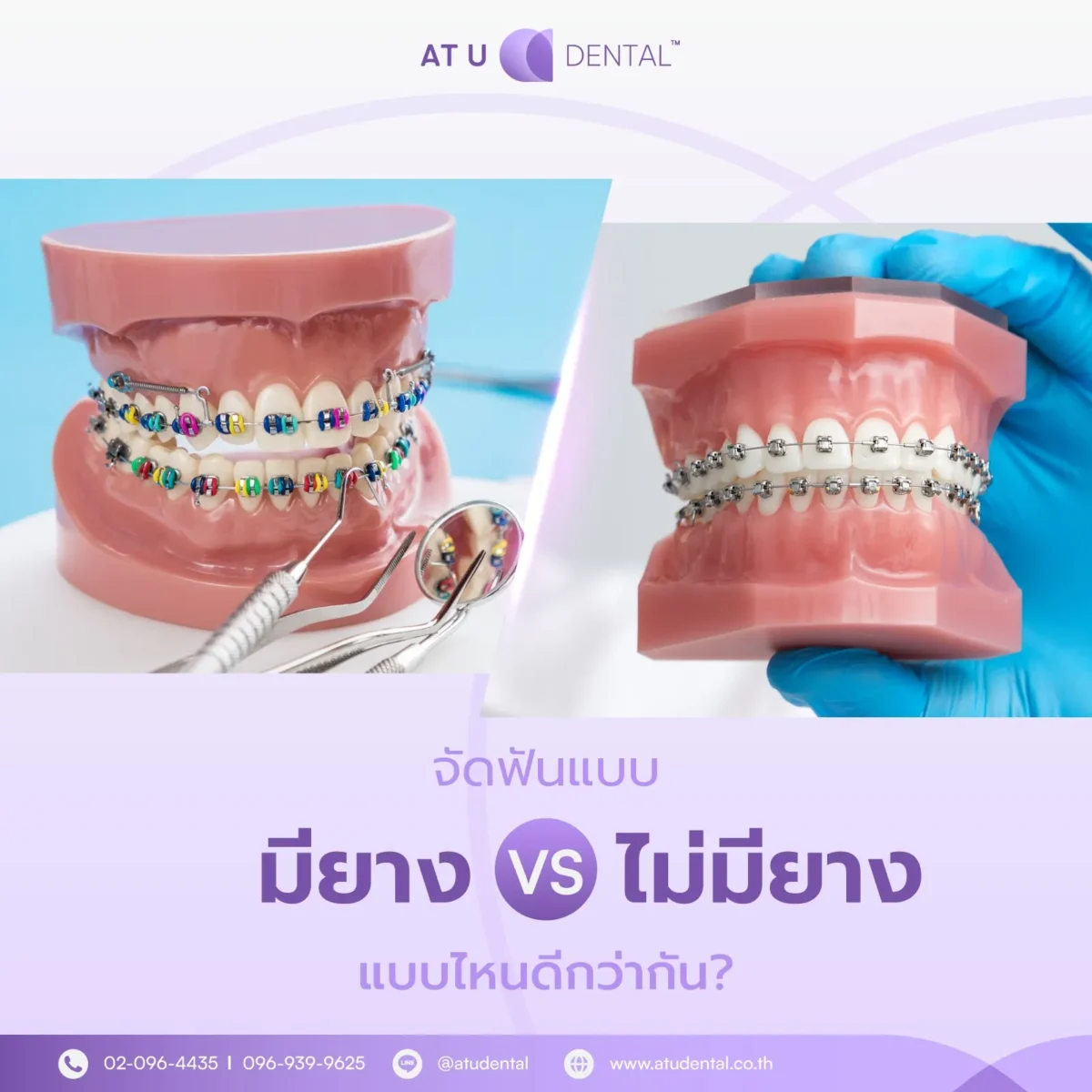Dental Clinic
คลินิคทันตกรรม
Damon Braces
The Damon braces system is an innovative orthodontic treatment that utilizes Self-Ligating Braces, which differ from traditional braces that require elastic bands to hold the archwire in place. The Damon system features specially designed brackets that reduce friction between the archwire and the bracket, allowing teeth to move more smoothly and efficiently. This advanced system shortens treatment time and reduces the frequency of visits to the orthodontist

Benefits of Damon Braces
- Reduced Friction: Self-ligating brackets allow teeth to move more smoothly with less force.
- Shortened Treatment Time: Damon braces typically require less time compared to traditional braces due to the system's efficiency.
- Easier Cleaning: Without elastic bands, there’s less chance of bacteria and plaque buildup.
- Increased Comfort: The reduced pulling force results in less discomfort for the patient.
Treatment Process
- Diagnosis and Planning
- The orthodontist examines oral health and tooth alignment.
- X-rays and dental impressions are used to create an appropriate treatment plan.
- Placement of Damon Braces
- The orthodontist attaches the Damon brackets and inserts the archwire.
- Regular AdjustmentsRegular Check-ups and Adjustments
- Appointments are scheduled every 8-10 weeks, which is less frequent than traditional braces.
- Completion of Treatment and Retention
- After treatment, a retainer is required to maintain the new tooth alignment.

Traditional Braces vs. Self-Ligating Braces: Which One Is Right for You?
Orthodontic treatment is a popular solution for misaligned teeth and bite issues. Two common options are traditional braces (with elastic bands) and self-ligating braces (without elastic bands). Each has its own advantages and drawbacks, and the best choice depends on individual needs and the orthodontist’s recommendation.
Traditional Braces (With Elastic Bands)
This type of braces uses metal brackets and rubber bands to control the movement of teeth.
Advantages
- Affordable Option: Generally more budget-friendly than self-ligating braces.
- Effective for Complex Cases: Suitable for severe misalignment or bite issues.
- Fun & Customizable: Patients can choose different elastic colors for a personalized look.
Disadvantages
- Difficult to Clean: Elastic bands can trap food and bacteria, requiring extra oral care.
- Higher Friction: More resistance between brackets and wires, which may extend treatment time.
- Frequent Adjustments Needed: Elastic bands wear out and need to be replaced regularly.
Self-Ligating Braces (Without Elastic Bands)
Self-ligating braces use a special locking mechanism instead of rubber bands, making tooth movement more efficient.
Advantages
- Lower Friction: The self-ligating system reduces friction, allowing teeth to move faster in some cases.
- More Comfortable: Less pressure and tension compared to traditional braces.
- Easier to Clean: No elastic bands to trap food and plaque.
- Fewer Visits: Treatment may require fewer orthodontic appointments.
Disadvantages
- Higher Cost: Typically more expensive than traditional braces.
- Limited Customization: No colored elastics for aesthetic variety.
Damon Braces vs. Traditional Braces: Which One Should You Choose?
| Features | Damon Braces (Self-Ligating) | Traditional Braces (With Ligatures) |
|---|---|---|
| Bracing System | Uses a self-ligating clip | Uses elastic bands |
| Speed of Treatment | Faster | Slower |
| Comfort | Less pressure, less pain | May feel tight and more painful |
| Cleanliness | Easier to clean, less plaque buildup | Elastic bands can trap plaque more easily |
| Number of Visits | Fewer visits (every 8-10 weeks) | More frequent visits needed |
If you are looking for more convenient orthodontic treatment with less pain and faster results, Damon Braces may be the right choice for you!
How to Choose the Right Braces
- Complexity of Dental Issues: Traditional braces may be better for complex cases.
- Budget Considerations: Traditional braces are generally more affordable.
- Comfort and Convenience: Self-ligating braces offer reduced discomfort and easier maintenance.
- Orthodontist’s Recommendation: A professional consultation is essential to determine the best option.
Regardless of your choice, proper oral care and following your orthodontist's advice are key to achieving a successful outcome!
Frequently Asked Questions (FAQ)
Q: How long does Damon treatment take?
A: Treatment usually lasts between 12 to 24 months, depending on the case’s complexity.
Q: Is Damon treatment painful?
A: Damon braces use lighter forces, making them less painful than traditional braces.
Q: How is Damon different from traditional metal braces?
A: Damon braces use self-ligating brackets that don’t require elastic bands, reducing friction and allowing for faster tooth movement.
Q: How much do Damon braces cost?
A: Costs typically range between 80,000 - 120,000 THB, depending on the case's complexity.
Q: How should I care for my teeth during Damon treatment?
A: Brush and floss regularly, and attend follow-up visits with your orthodontist to monitor progress.
The Damon braces system is a modern and highly efficient orthodontic solution that helps reduce treatment time and enhances patient comfort. It also promotes better oral health. If you're looking for a hassle-free and effective orthodontic treatment, Damon braces could be the perfect choice for you.
References:
- The Dental Association of Thailand
- Guidelines for Dental Treatment by the Ministry of Public Health
- Orthodontics: Current Principles and Techniques
- Information provided by Damon system service providers
Dental Treatment


